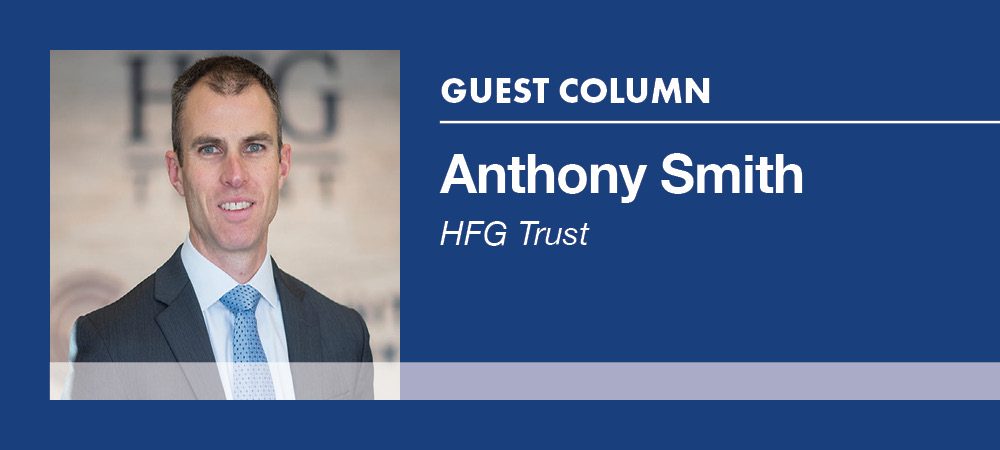
Home » Where’s the inflation and what should investors do about it?
Where’s the inflation and what should investors do about it?

July 15, 2020
Will the massive fiscal and monetary stimulus packages designed to save the economy actually lead to high inflation?
This is becoming a hotly debated topic. In this column, we’ll explore inflation, future expectations and how to protect your nest egg.
Inflation can be broadly defined as the increase in prices of goods and services over time. However, I like to think of it a little differently. I view inflation as the erosion of the purchasing power of a hard-earned dollar.
Putting it that way typically prompts a more visceral reaction: “Who or what is taking away my purchasing power!?”
A widely used inflation gauge is the Consumer Price Index, or CPI. The latest CPI reading, taken in May, showed that on average, prices increased a mere 0.1% from the prior year.
It has always been a bit of a headscratcher to me how remarkably low and stable CPI is. Fortunately for those among us who like to dig deeper, the monthly CPI release is far from a black box calculation.
In May, price changes ranged from a 27% increase for uncooked beef roasts to a 38% decrease for fuel oil, with every other category’s price change falling somewhere in between. Luckily, the price of instant coffee declined 1.6%. I’ll take all the wins I can get.
Stable prices are important to a smoothly functioning economy.
If prices are rising quickly, consumers will make every effort to part with their depreciating currency as soon as possible. This pulls future consumption into the current period, resulting in an increase in the quantity demanded, which brings about still higher prices and hoarding activity. This feedback loop can be devastating to economies.
I came of age in the 1990s and have only known stable prices.
I have no interesting personal accounts of inflation to relate to others, but I listen—and I absorb the history, the pain and the lessons. In the 19 years from 1970-89, a dollar lost 70% of its purchasing power.
In contrast, a dollar only lost 35% of its purchasing power from 2000-19.
As investors approach retirement and increase exposure to fixed income securities, it’s natural to pay closer attention to inflation expectations and plan accordingly.
Lucky for us, there are some very powerful folks who not only pay very close attention to inflation, but they also have the tools to influence it as well. They are our central bankers. Our central bank, the Federal Reserve, or Fed, oversees the supply of money, and targets a 2% annual inflation rate.
In recent months, the Fed has injected trillions of new dollars into the American economy to cushion against the severe negative impacts from pandemic shutdowns. It might seem that if the supply of money increases substantially, then prices should increase substantially as well.
However, CPI has remained quite low since the last major money printing episode of 2008.
One of the fascinating things about inflation is that expectations matter.
Expectations influence our buying habits, which in turn impact inflation. It’s a classic self-fulfilling prophecy. If we expect higher future inflation, we’ll ask for wage increases which will force our employers to raise prices, and so on.
Recall, however, that I have known only stable prices during my entire life as a consumer. Neither I nor anyone in the big spending 20- to 50-year-old age bracket wakes up each morning expecting prices to be higher. And for that reason, prices are very sticky, which has allowed the Fed to run the wheels off its virtual money printing press while prices remain stable.
Where is all the newly created money going if it’s not showing up in the prices of goods and services?
It’s showing up in asset prices, including stocks and real estate. In addition to injecting trillions of new dollars into our economy, the Fed has effectively endorsed speculative behavior. And voila! We have elevated stock and real estate valuations even in the face of a sharp recession.
What are some factors that could ignite CPI inflation this time around?
First, some Fed officials have indicated a willingness to let inflation run hotter than its 2% target, so don’t expect policy tightening at the first signs of higher inflation.
Second, a quick rebound could absorb any deflationary slack in the economy and lead to higher prices. Third, any reversal of the secular offshoring trend (i.e., bringing production home) could pressure cost structures. Recent supply chain disruptions have led many industry executives to reconsider logistics strategies.
There are choices available to investors looking to defend against inflation.
Real estate, gold, inflation-linked bonds and companies with strong pricing power are examples of investment options that could serve to limit the harmful impacts of inflation on your investment portfolio over time. Protect your purchasing power!
Anthony Smith is a chartered financial analyst and portfolio manager in the Kennewick office of HFG Trust. He is a Tri-City native and University of Washington graduate.
Local News Banking & Investments Wealth Management
KEYWORDS july 2020




